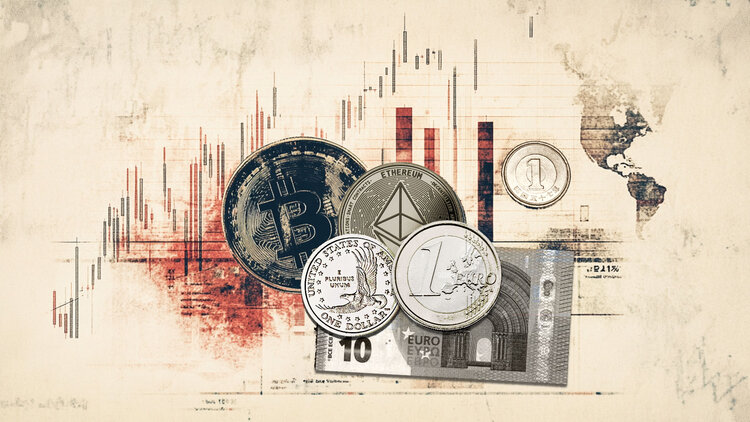The Pound Sterling (GBP) recovery from seven-week lows against the US Dollar (USD) lost legs, sending GBP/USD back below the 1.3500 threshold.
Pound Sterling recovery lost steam
Amid cautious remarks by the Bank of England (BoE) policymakers and a broad-based US Dollar downside, the GBP/USD pair staged an impressive turnaround from the 1.3330 region to briefly regain 1.3500 before facing some headwinds above the latter in the second half of the week.
However, buyers retained control, registering a weekly gain for the first time in three weeks.
Benign US core Personal Consumption Expenditures (PCE) inflation data and concerns over a potential government shutdown in the United States (US) fuelled a fresh downtrend in the USD across its competitors at the start of the week.
The latest US Personal Consumption Expenditures (PCE) inflation data, released on September 26, showed that the headline PCE Price Index rose 2.7% year-on-year (YoY) in August, up from 2.6% in July. Core PCE inflation, the Federal Reserve’s (Fed) preferred inflation gauge, held steady at 2.9% YoY in August. The data came in line with market expectations.
Meanwhile, the US was headed for a government shutdown on the first day of the 2026 fiscal year on October 1. US Vice President JD Vance warned that “I think we’re headed to a shutdown.”
His comments came after US President Donald Trump and his Democratic opponents appeared to make little progress at a White House meeting aimed at averting the shutdown beyond a Tuesday midnight deadline (Wednesday 4 GMT).
During the same time, BoE officials Dave Ramsden, Catherine Mann and Sarah Breeden warned about higher inflationary pressures, advocating the central bank’s prudence on further easing.
On Wednesday, the Greenback faced a double whammy and accelerated its declines on the US government’s closure of its operations as Congress failed to advance the funding bill.
The shutdown-induced delay in the US statistics raised doubts on the scope and timing of further Fed interest rate cuts beyond the October 28-29 meeting. This narrative dented the sentiment around the USD.
The USD was further hurt by a weak US Automatic Data Processing (ADP) jobs report, which sealed in a 25 basis points (bps) rate cut later this month. Subsequently, GBP/USD reached a five-day high at 1.3527.
The ADP showed on Wednesday that private companies shed a seasonally adjusted 32,000 jobs during the month, the biggest slide since March 2023. Markets expected an increase of 50,000 in the reported month. The US ADP data outweighed the uptick in the ISM Manufacturing PMI to 49.1 in September.
However, the USD received some support in the second half of the week, following news that the Supreme Court allowed Fed Governor Lisa Cook to remain in her post pending oral arguments in January on whether President Donald Trump has legal cause to fire her, per CNBC News.
Further, the Artificial Intelligence (AI) frenzy-driven record highs on global stocks and a bout of profit-taking in Gold (XAU/USD) from lifetime highs, helped the Greenback crawl back some ground heading into the weekend. This, in turn, dragged the pair back under toward the 1.3400 level.
A data-light week ahead
With traders battling from the fallout of the US government shutdown, the upcoming week appears light data-wise amid the continued Golden Week holidays in China.
Monday is devoid of any top-tier economic releases from both sides of the Atlantic.
Until the US government funding is restored, the data publication from the US Department of Labor (DoL), Bureau of Labor Statistics (BLS) and the Census Bureau during the week will be delayed.
Therefore, the focus will remain on the Minutes of the Fed’s September meeting and further shutdown talks for fresh directional impetus on the US Dollar, in turn, on the GBP/USD pair.
Meanwhile, the University of Michigan (UoM) preliminary Consumer Sentiment and Inflation Expectations data will entertain traders heading into the weekend.
Besides, speeches from Fed policymakers, along with any fresh developments on the geopolitical and trade front, will also be closely followed.
GBP/USD: Technical outlook

GBP/USD failed its attempts to reclaim the key daily Simple Moving Averages (SMA), surrendering the critical 50-day SMA, now at 1.3462, after having faced rejection at around 1.3500 on multiple occasions.
That level is the confluence of the round level, 21- and 100-day SMAs.
The 14-day Relative Strength Index (RSI) points lower below the midline, suggesting that the downside bias will likely remain in place.
If the GBP/USD pullback gathers strength, the 1.3330 round level will offer initial support, below which the August 4 low of 1.3254 will be tested.
Further south, the August low of 1.3142 could come to the rescue of buyers, where the 200-day SMA coincides.
GBP/USD must find acceptance above the aforesaid confluence resistance zone at around 1.3500, where the rising trendline support-turned-resistance intersects and makes it a powerful barrier.
The next relevant topside hurdle is located in the 1.3600-1.3620 supply area.
A sustained move above the latter will expose the July 4 high of 1.3681 on the way to 1.3788 (July 1 high).
Pound Sterling Price Last 7 Days
The table below shows the percentage change of British Pound (GBP) against listed major currencies last 7 days. British Pound was the strongest against the Canadian Dollar.
| USD | EUR | GBP | JPY | CAD | AUD | NZD | CHF | |
|---|---|---|---|---|---|---|---|---|
| USD | -0.61% | -0.78% | -1.71% | 0.22% | -1.09% | -1.11% | -0.37% | |
| EUR | 0.61% | -0.12% | -1.04% | 0.88% | -0.42% | -0.44% | 0.26% | |
| GBP | 0.78% | 0.12% | -0.83% | 1.02% | -0.21% | -0.32% | 0.36% | |
| JPY | 1.71% | 1.04% | 0.83% | 1.91% | 0.59% | 0.58% | 1.20% | |
| CAD | -0.22% | -0.88% | -1.02% | -1.91% | -1.31% | -1.30% | -0.65% | |
| AUD | 1.09% | 0.42% | 0.21% | -0.59% | 1.31% | -0.02% | 0.63% | |
| NZD | 1.11% | 0.44% | 0.32% | -0.58% | 1.30% | 0.02% | 0.79% | |
| CHF | 0.37% | -0.26% | -0.36% | -1.20% | 0.65% | -0.63% | -0.79% |
The heat map shows percentage changes of major currencies against each other. The base currency is picked from the left column, while the quote currency is picked from the top row. For example, if you pick the British Pound from the left column and move along the horizontal line to the US Dollar, the percentage change displayed in the box will represent GBP (base)/USD (quote).






